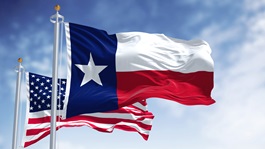
Publication
Year in review: Texas Business Court key discovery rulings
In its first year, the Texas Business Court has issued forty-two written opinions on a number of dispositive and discovery-related issues.


On April 30, 2020 the Board of Governors of the Federal Reserve System (Federal Reserve) announced an overhaul to the Main Street Lending Program by expanding both its scope and eligibility requirements. The Main Street Lending Program is a part of Congress’ efforts to rehabilitate the economy and one of the measures included in the Coronavirus Aid, Relief, and Economic Security (CARES) Act to help credit flow to small and medium-businesses that were in sound financial condition before the pandemic.
The expanded program establishes a single Special Purpose Vehicle (SPV) supported by a $75 billion equity investment by the Treasury Department (using funds from the $454 billion appropriated under the CARES Act to support programs established Federal Reserve Board) and lending by the Federal Reserve Bank. The combined size of the facilities will be up to $600 billion.
The Main Street Lending Program now includes three types of loan facilities:
Lending for these facilities will be implemented through a single common SPV, which will purchase 95 percent participations in the MSNLF and MSELF loans and 85 percent participations in the MSPLF loans from lenders. Lenders will retain a higher stake in MSPLF loans in order to allocate risk, given the higher debt threshold for the MSPLF loans.
The revised scope of the Main Street Lending Program increases the eligibility requirements for the businesses applying for any of the three programs. The applicant may now:
The minimum amount to be borrowed was decreased from the original $1 million to $500,000 making the Main Street Lending Program more attractive for smaller businesses. Contrary to other programs in the CARES Act, such as the Payment Protection Program, loans issued under the Main Street Lending Program will not be forgiven and must be repaid in full. Borrowers are also required to certify that they will follow the employee compensation, stock buyback and capital distribution restrictions outlined in the CARES Act.
Main Street Lending Program loans are based on the borrower’s earnings before interest, taxes, depreciation and amortization (EBITDA). Depending on which lending facility makes the loan, the maximum loan amount is capped at either $25 million for MSNLF and MSPLF or $200 million for MSELF. Each facility uses a different EBITDA-to-debt ratio to determine the maximum loan size. MSNLF loans are capped at $25 million or four times adjusted 2019 EBITDA, whereas the new MSPLF loans are capped at $25 million or six times adjusted annual EBITDA allowing businesses that have more debt to also obtain new loans under the Main Street Lending Program. Lastly, MSELF is capped at $200 million or six times adjusted 2019 EBITDA.
The loans are for a term of four years at an interest rate of London Inter-Baking London Inter-Bank Offered Rate (LIBOR) (1 or 3 months) plus 3 percent. The repayment of the loan’s principal and interest is deferred for one year.
The SPV will stop purchasing participations in eligible loans on September 30, 2020, unless extended by the Federal Reserve Board and Treasury Department. The Federal Reserve Bank will continue to fund the SPV beyond September 30, however, only until the SPV’s underlying assets mature or are sold.
For a more detailed analysis please see Norton Rose Fulbright’s Main Street checklist.

Publication
In its first year, the Texas Business Court has issued forty-two written opinions on a number of dispositive and discovery-related issues.
Subscribe and stay up to date with the latest legal news, information and events . . .
© Norton Rose Fulbright US LLP 2025